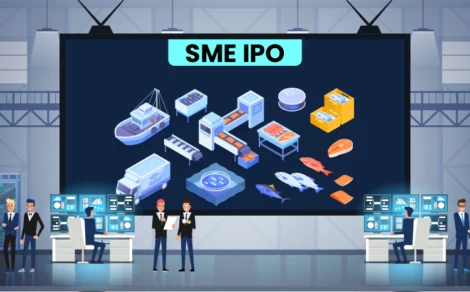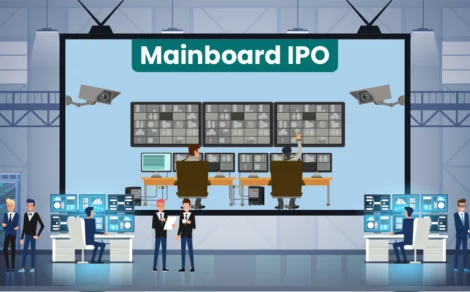Electric two-wheeler manufacturer Ather Energy Ltd. is all set to introduce its initial public offering on April 28, and will be available for bidding until April 30. The Bengaluru-based automobile ace becomes the first major company in the country to enter the primary market in the fiscal year 2025-26. The company is the second EV manufacturer in India to go public after Ola Electric Mobility [NSE: OLAELEC], which introduced its IPO in 2024.
Along with an Offer-For-Sale (OFS) worth 1.1 Crore equity shares coming from promoters and stakeholders, Ather Energy IPO will also have a ₹2,626 Crore fresh issue of equity shares. The company will introduce the IPO within a per share price band of ₹304-321.
Why is it the Right Time for Ather Energy IPO Now?
The company plans to utilise the funds raised to establish a manufacturing unit for two-wheelers in Maharashtra and reduce its debt. The timing of Ather Energy’s IPO launch IPO Launch April 28-30, is strategic due to several key factors:
- Booming EV Market: India’s electric vehicle (EV) market is experiencing rapid growth. The country’s EV sales grew by 27% in FY24, with electric two-wheelers gaining significant traction. As one of the leaders in this sector, Ather Energy is well-positioned to capitalise on this expansion.
- Manufacturing Expansion: Ather’s upcoming facility in Chhatrapati Sambhajinagar, Maharashtra, will ramp up production to 1million units by 2027. This will significantly boost its manufacturing capabilities, supporting future growth.
- Government Support: The Indian government’s focus on EV adoption, backed by subsidies and incentives under the FAME scheme, provides a favourable environment for EV companies like Ather to thrive.
- Established Market Presence: Ather holds a 12% market share in India’s electric two-wheeler market, indicating strong brand recognition and customer demand.
- Financial Growth: Despite operating at a loss, Ather’s revenue surged to ₹1,753 crore in FY24, showcasing growth potential as the company scales operations.
The combination of a rapidly expanding market, strategic expansion plans, and government support makes this the right time for Ather Energy to go public.
What Does it Mean for Investors?
The IPO presents an intriguing Ather Energy investment opportunity, but it comes with both significant potential and notable risks for investors.
- Growth in EV Market: India’s electric vehicle (EV) market is rapidly growing, and Ather Energy is well-positioned within this sector. With increasing awareness about sustainability and government incentives, the demand for electric two-wheelers is expected to rise. As a leader with a 12% market share in this segment, Ather stands to benefit from this long-term trend.
- Manufacturing Expansion: The company’s new facility in Chhatrapati Sambhajinagar, Maharashtra, is set to boost production capacity to 1 million units by 2027, increasing its market presence and revenue potential. This expansion could result in economies of scale, driving profitability as operations scale up.
- Technological Innovation: Ather continues to invest in R&D to enhance its products, such as the Ather 450x and the upcoming Rizta scooter. The focus on innovation positions the company to stay ahead of competitors like Ola Electric and TVS Motors, offering new growth opportunities.
- Attractive Valuation: With an adjusted valuation of $1.4 billion, the IPO price band of ₹304 to ₹321 per share offers a relatively attractive entry point for investors, especially considering the long-term potential in the EV space.
The Key Risks & Challenges
Investing in Ather Energy’s IPO presents a promising opportunity, but several key risks and challenges should be considered:
- Ongoing Losses: Ather Energy reported a net loss of ₹1,059 crore in FY24. Despite significant revenue growth, the company is still operating at a loss. Investors must weigh the potential for profitability against the risks of continued losses.
- Intense Competition: Ather faces strong competition from established players like Ola Electric, TVS Motors, and new entrants. The competition in the Indian electric two-wheeler market is fierce, and the market share is fragmented, making it difficult for any single player to dominate.
- EV Market Fluctuations: The electric vehicle market, although growing, is still evolving. Fluctuations in demand, regulatory changes, and global supply chain issues (like battery material shortages) could impact Ather’s growth and stock performance.
- Expansion Plans: Ather’s growth depends heavily on its ability to scale operations, especially with its new manufacturing facilities. Delays in construction, production capacity expansion, or supply chain issues could affect the company’s ability to meet future demand.
- Government Policy Dependence: Ather Energy’s growth is closely tied to government policies, such as subsidies under the FAME scheme. Any change in these policies could affect the company’s financial stability and its market positioning.
While Ather Energy’s IPO offers long-term potential, investors should consider the risks related to financial losses, competition, scalability, and market volatility before investing.
Ather IPO Details Key Details
Important Dates
- IPO Opening Date: April 30, 2025
- Anchor Investor Bidding Date: April 25, 2025
- Public Bidding Period: April 28–30, 2025
- Listing Date: Expected in early May 2025
Public Issue Information
- Total Issue Size: ₹2,626 Crore
- For whom
- 75% for qualified institutional investors
- 15% for non-institutional investors
- 10% for retail investors
- Offer Structure
- Fresh Issue: ₹2,000 Crore
- Offer for Sale (OFS): ₹626 Crore
- Price Band: ₹304 to ₹321 per share
- Lot Size: (To be updated once disclosed)
Top Upcoming IPOs to Watch (23rd–27th June 2025)
- Kalpataru Ltd IPO
- HDB Financial Services Ltd IPO
- Globe Civil Projects Ltd IPO
- Ellenbarrie Industrial Gases Ltd IPO
- Suntech Infra Solutions Ltd IPO
Conclusion
With an issue size of ₹2,626 crore and a price band of ₹304-321 per share, Ather aims to leverage the funds to expand its manufacturing capacity and reduce debt. Ather’s strong market presence and its plans to increase production to one million units by 2027 position it well for future growth. Hence, it is being seen as a significant investment opportunity. However, investors must consider the risks before making investments, given the company’s ongoing financial losses, competition, and dependence on government policies.
If you are exploring more investment opportunities, check out our dedicated page on upcoming IPO listings to stay updated on the latest market offerings.


